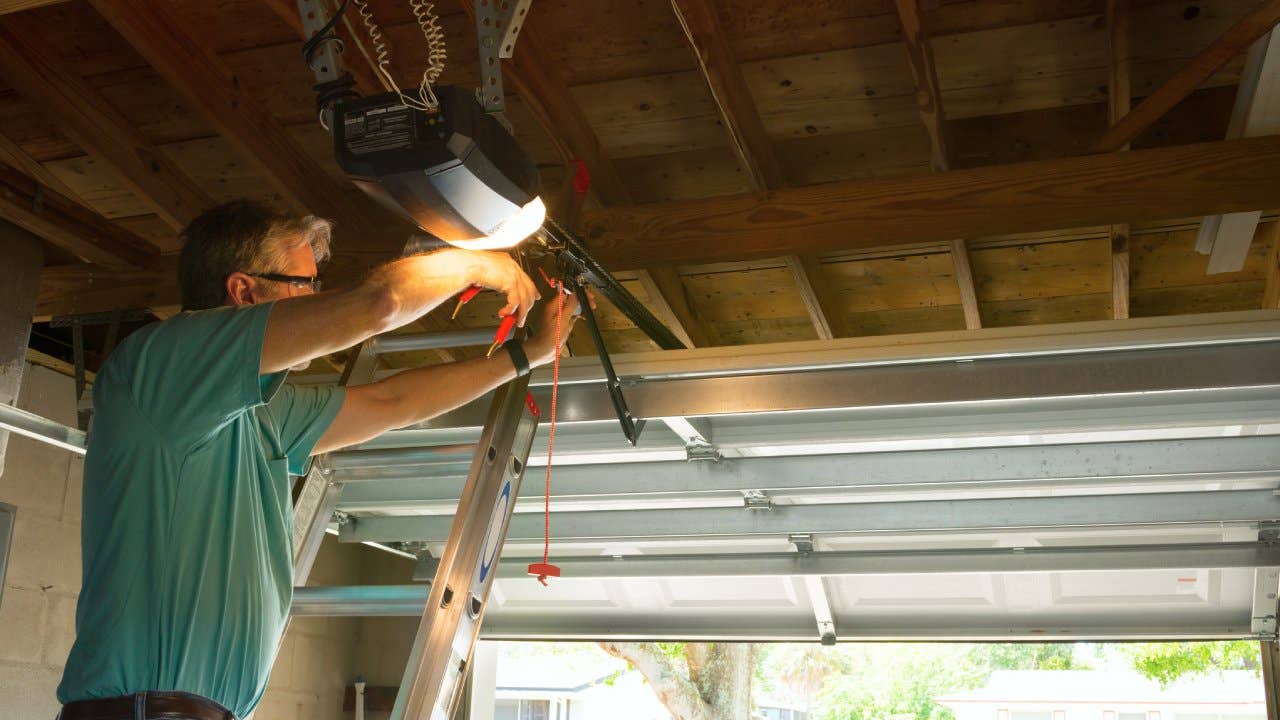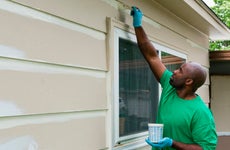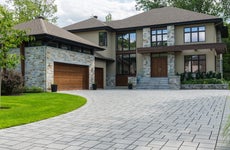The top 7 renovations that increase home value in 2023

The Bankrate promise
At Bankrate we strive to help you make smarter financial decisions. While we adhere to strict , this post may contain references to products from our partners. Here's an explanation for .
Renovations have the ability to make us happier in the places we call home, but some updates can add more value than others when it’s time to sell or refinance. Some of the best home improvements — think an updated kitchen, new deck or remodeled bathroom — can get pricey. That’s why before you decide to take on a remodeling project, it’s helpful to know what kind of return on it you might expect — that is, how much of its costs it’ll recoup, in terms of adding to your home’s value and asking price when you put it on the market.
Best home renovations in 2023
Each year, the respected trade publication/platform Remodeling analyzes costs for major home renovation projects, estimating the value those projects offer at resale. Recently released, the “2023 Cost vs. Value report” compares the average cost of 22 remodeling projects in 150 markets throughout the U.S, with five offering a return on investment (ROI) of 100% or more.
Here are the seven home remodeling projects that nationally deliver the highest returns on investment (ROI), according to the report. So if you’re thinking of listing your home, these are the renovations that should top your to-do list. Of course, they’re also good to bear in mind if you want to increase your home’s worth for other reasons — to enhance your home equity, for example. Not to mention, improve your enjoyment of your home in general.
1. HVAC conversion
- Average cost: $17,747
- Average resale value: $18,366
- Cost recouped: 103.5%
Number one is a newcomer to the list: Converting a fossil-fuel-burning furnace to an electric heat pump, installing new lines and wall units. Not the most glam of renovations, but a trendy one, reflecting the rising interest in renewable-sourced, eco-friendly and energy-efficient HVAC systems (heat pumps both heat and cool a home, replacing electricity-gobbling air conditioners). The conversion is a pricey project — on average for a 2,000-square foot home, you’ll pay $17,747 for the project — but your ROI is outstanding at over 100 percent.
2. Garage door replacement
- Average cost: $4,302
- Average resale value: $4,418
- Cost recouped: 102.7%
A good-looking garage door is high on the list when it comes to getting cash back on your investment. The estimate for this job is based on the cost of removing and disposing of 16-by-seven-foot garage doors and replacing them with four-section doors with heavy-duty galvanized steel tracks, and assumes you’re reusing the motorized garage door opener. This curb appeal enhancer could get you back more than you spent on it when you sell your home — one of the few home remodeling projects to do so.
3. Manufactured stone veneer
- Average cost: $10,925
- Average resale value: $11,177
- Cost recouped: 102.3%
Stone always imparts a classic, classy vibe. Replacing vinyl siding with stone veneer — even on just a part of your home, such as the entryway — can greatly enhance the exterior and, again, the curb appeal of a house. The average cost estimate accounts for 36 linear feet of sills, 40 linear feet of corners and one address block, and materials including two water-resistant barrier layers and corrosion-resistant lath and fasteners. This project adds not only class to your home but coin to your pocket, as it also recoups all of your expenses and then some.
4. Entry door replacement
- Average cost: $2,214
- Average resale value: $2,235
- Cost recouped: 102.9%
Exterior projects tend to have a better return than interior ones, Remodeling notes — a truism that seems to be truer than ever, as replacing the front door — with, specifically, a steel one — has jumped this year to nearly a 101 percent ROI, up from 64 percent in 2022. That could be because these doors offer a double-whammy: enhanced curb appeal and energy-efficiency — they fit more tightly into door-frames, reducing drafts that increase heating and cooling bills. And while they sound like something for a bank vault or jail cell, steel doors (actually, a steel skin with a polyurethane foam insulation core) come in a variety of styles and finishes, and include windows.
5. Siding
Old or dilapidated siding can make even the nicest, structurally sound home look worn-out. The report considers replacing it with two types of quality man-made materials: fiber-cement and vinyl.
Fiber-cement
- Average cost: $19,361
- Average resale value: $17,129
- Cost recouped: 88.5%
For the average home, replacing 1,250 square feet with new fiber-cement siding will cost you $19,361 and you can expect to get back more than three-fourths of that investment upon resale. This upgrade includes 4/4 and 5/4 trim (4/4 and 5/4 are fractions measuring thickness).
Vinyl
- Average cost: $16,348
- Average resale value: $15,485
- Cost recouped: 94.7%
Vinyl siding can be more budget-friendly than fiber-cement siding, with a slightly higher ROI. The $16,348 average cost estimates replacing 1,250 square feet with the new siding, and you should get back roughly 94.7 percent of that investment upon resale.
6. Minor kitchen remodel
- Average cost: $26,790
- Average resale value: $22,963
- Cost recouped: 85.7%
A modern, functional kitchen can of course boost your enjoyment of everyday activities like cooking, sharing meals and entertaining friends. It’s a strong selling point with prospective home buyers too. A minor remodel, as the report defines it, is based on a 200-square-foot kitchen with 30 linear feet of countertops and cabinets, where you might be replacing appliances with new, more energy-efficient models; refacing cabinets with shaker-style panels; installing new countertops or a sink; replacing hardware; adding new flooring; and repainting the walls. Except for the appliances, it mainly involves cosmetic changes, and that’s how you’ll recoup up to 85.7 percent of your outlay. If you’re thinking ROI, keep the project modest. Interestingly, major kitchen remodels that involve changing the room’s size or layout, or installing new cabinetry, return much less: 41.8 percent.
7. Window replacement
Windows are the eyes of the home, it’s sometimes said. Again, you have a couple of options, frame-materials-wise, which impact the ROI a bit.
Vinyl
- Average cost: $20,091
- Average resale value: $13,766
- Cost recouped: 68.5%
You could recoup just over two-thirds of the cost to replace your current windows if you install low-E, simulated, divided-light vinyl windows with a custom-color exterior finish. (Low-E means low emissivity, an energy saver.) You’ll want to ensure that the trim exterior matches existing ones, and the interior trim is left untouched, to keep costs within range. The average cost for this type of renovation — which accounts for 10 windows — will set you back $20,091.
Wood
- Average cost: $24,376
- Average resale value: $14,912
- Cost recouped: 61.2%
If you do the above, but make the frames out of warmer wood windows (better for older or more traditional-looking homes), you’ll spend a little over $24,000 for the job. Not surprisingly, since wood is more expensive, your expected return on investment drops by a several percentage points.
Other remodels with a good ROI
There are other projects you can do to increase the value of your home — more discretionary, aesthetic-oriented remodels. While the recouping of costs is far from complete, the ROI overall is decent, and they often make an impact with home buyers.
Bathroom remodel
Bathroom renovations — enlarging the space, replacing and modernizing fixtures, upgrading materials — to enhance looks or functionality (or both) are perennially popular and a good selling tool: More than 25 percent of Realtors recommend upgrading the bathroom before placing a home on the market. The cost range is large, about $70 to $250 per square foot on average and the return on investment runs in the 68 to 71 percent range. As with kitchens, less is more, ROI-wise: major bathroom remodels (involving changing the layout and using luxe materials) return only 36.7 to 46 percent, according to Remodeling.
Deck additions
Having a finished outdoor area to work, entertain or just relax in is tops on many prospective homebuyers’ wish lists. The deck remains one of the most popular ways to convert the home’s exterior into a living space. It’ll run you $10 to $30 per square foot for the project.
And yet again, material does matter. The classic wood deck is less expensive to install — though it requires more upkeep — and offers a pretty good return, half of its outlay. Composite decks have exceptional durability: You won’t have to worry about them rotting, warping or splintering like wood tends to do. That makes them more expensive to install, and so their ROI is not great: 39.8 percent.
Hardwood floors
Decor styles come and go, but one item that always ranks high on the home design hit parade is the hardwood floor. Natural, versatile and synonymous with “quality,” it can work in just about any room and with any decorating scheme.
Hardwood is among the more expensive of flooring materials, averaging $6 -18 per square foot (including labor to install). But once down hardwood floors are easy to clean and maintain.
And they’re a good investment. Installing hardwood floors recovers 118 percent of the project cost, according to the “2022 Remodeling Impact Report” of the National Association of Realtors/National Association of the Remodeling Industry. Refinishing your hardwood floors — basically giving them a facelift, sanding down and restaining them — returns a whopping 147 percent of its cost.
How to pay for home renovations
To finance home improvements, consider a home remodel or home repair loan, which are unsecured personal loans you can get through a bank, credit union or online lender. You can also use credit cards to cover home renovations, although the interest rates can be high.
If you want to go the secured loans route, there are home renovation loans offered by Fannie Mae and the FHA. You can obtain a home equity line of credit (HELOC), which is a revolving line of credit that’s backed by your home. Because HELOCs are secured, they tend to have lower interest rates than unsecured loans.
Alternatively, you could get a home equity loan, also known as a second mortgage, which has a fixed rate, is paid out in a lump sum and repaid over a predetermined duration. A home equity loan might be a strong contender to pay for home improvement projects if you have a firm idea of what you want to do and how much it’ll cost.
You could also do a cash-out refinance, which swaps your current mortgage with a new, bigger loan so you’ll have the funds to make renovations. Refinancing comes with closing costs and can stretch out the length of your repayment period, but if you can get a low interest rate, it can be one of the more cost-effective options.
Bottom line on home value-enhancing renovations
Bear in mind that all these figures are national averages. Costs can vary greatly by region based on the cost of labor and materials, as well as the level of service offered. And they can change. “Inflation is a major factor in home remodel materials, as many common materials and contractors are increasing in prices,” says Mary Anderson, co-founder of Brotherly Love Real Estate, a Philadelphia-based firm that buys houses for cash. Particularly wood: The ROI on all the lumber-involved projects has dropped significantly this year, as prices have soared.
Still, the right remodeling project can still boost your home’s worth over time. If you refinance, for instance, an appraiser takes renovations into account when estimating your home’s value. A higher home value means you’ll have more equity and a lower loan-to-value ratio — both useful if you want to take out a home equity loan or HELOC. You might even be able to cancel private mortgage insurance payments earlier than anticipated.
Likewise, when you go to sell your home, buyers are likely to pay more for a clean, well-kept property with modern updates that’s move-in ready.
Related Articles



